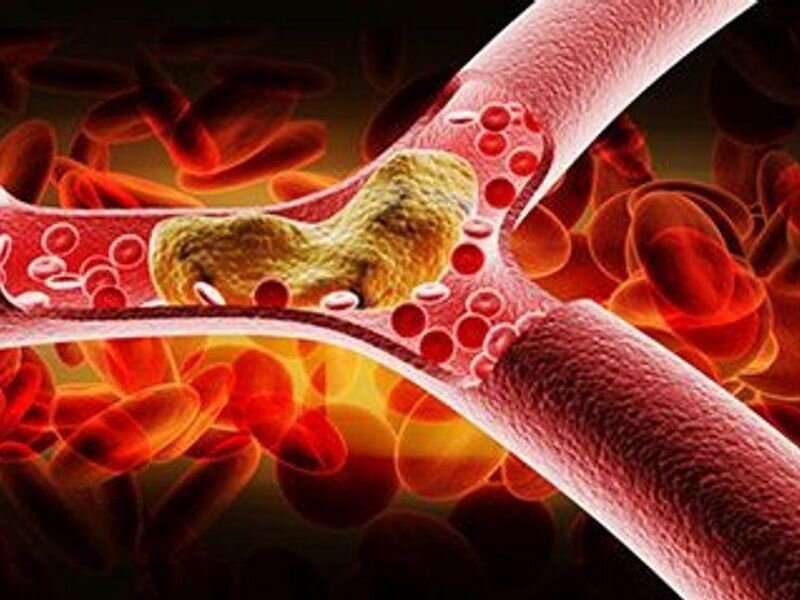Risk factors ID’d for postdischarge thrombosis in COVID-19 patients

(HealthDay)—For patients hospitalized with COVID-19, risk factors for postdischarge venous thromboembolism (VTE) include history of VTE, peak D-dimer level greater than 3 µg/mL, and predischarge C-reactive protein level greater than 10 mg/dL, according to a study published online Nov. 22 in JAMA Network Open.
Pin Li, Ph.D., from Henry Ford Health System in Detroit, and colleagues quantified the rate of and examined risk factors for postdischarge arterial and venous thromboembolism in a cohort study of 2,832 adult patients hospitalized with COVID-19.
The researchers found that 36 patients (1.3 percent) had postdischarge venous thromboembolic events and there were 15 (0.5 percent) postdischarge arterial thromboembolic events. There was a decrease in the risk for VTE with time, with a median time to event of 16 days. No change was seen in the risk for arterial thromboembolism with time, with a median time to event of 37 days. The likelihood of experiencing VTE after discharge was increased for patients with a history of VTE, peak D-dimer level greater than 3 µg/mL, and predischarge C-reactive protein level greater than 10 mg/dL (odds ratios, 3.24, 3.76, and 3.02, respectively). The incidence of VTE was reduced in association with prescriptions for therapeutic anticoagulation at discharge (odds ratio, 0.18).
“We propose that any patients with these risk factors be considered for postdischarge therapeutic anticoagulation if their bleeding risk is low,” the authors write.
Source: Read Full Article



